Software Reconstructions of Early Computer-Aided Design Systems
"Experimental Archaeology of CAD” is a research project exploring the origins of computer-aided design by reconstructing a selection of historical software systems from the 1960s and 70s. Drawing from primary archival and oral sources, these reconstructions playfully revisit these transformative technologies, which were central to re-shape architectural and engineering practices during the second half of the twentieth century. Developed with computational design students at Carnegie Mellon University using modern hardware and software languages, these reconstructions are not replicas, but inquisitive artifacts of historical and design inquiry. By evoking the embodied experience of interacting with early CAD systems, they shed light on the new forms of human-machine work that emerged with the rise of interactive computing during the Cold-War years, thus highlighting sensual and gestural dimensions of the “computer revolution.” At the same time, their development brings to light their operative logic, and the limitations of early data structures for geometric representation and hardware, underscoring interplays between technological constraints and theoretical ideas about design that are hard to grasp through visual or textual accounts. Finally, they make tangible the visions of design practice that were engineered into these systems, offering access to the intellectual contexts that shaped design during the second half of the 20th century. An ongoing project, the installations developed thus far include Steven A. Coons’ “Coons Patch,”(2017) Ivan Sutherland’s “Sketchpad,” (2017) and Christos Yessios’ “CISP” system (2019), and URBAN5 by Nicholas Negroponte (2021). IMAGE by Guy Weinzapfel, BDS by Charles Eastman, among others, are currently in production.
Dates
2017-2023 (ongoing)
Team
Scott Donaldson, Emek Erdolu, Harshavardan Kedia, Jinmo Rhee, Erik Ulberg
Publications
Cardoso Llach, Daniel, Eric Kaltman, Emek Erdolu, and Zachary Furste. “An Archive of Interfaces: Exploring the Potential Of Emulation for Software Research, Pedagogy, and Design.” Proceedings of the ACM Conference in Computer Supported Collaborative Work, Virtual, 2021. https://dl.acm.org/doi/abs/10.1145/3476035
Cardoso Llach, Daniel, and Scott Donaldson. “An Experimental Archaeology of CAD: Using Software Reconstruction to Explore the Past and Future of Computer-Aided Design Technologies.” In Computer-Aided Architectural Design. “Hello, Culture,” edited by Ji-Hyun Lee, 105–19. Communications in Computer and Information Science. Springer Singapore, 2019. https://doi.org/10.1007/978-981-13-8410-3_8
Daniel Cardoso Llach. 2018. “Reconstructing ‘Sketchpad’ and the ‘Coons Patch’: Toward an Archaeology of CAD.” Leonardo 51 (4): 429–30. https://doi.org/10.1145/3202918.3205925
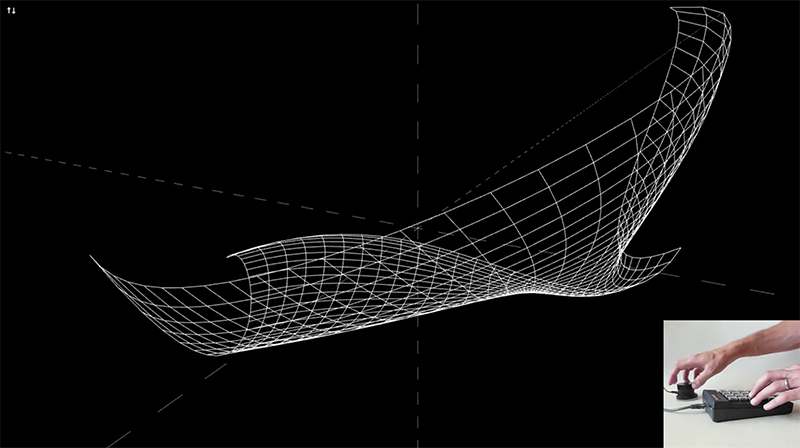
Exhibitions
"Vers un imaginaire numerique", Centre de design de l'UQAM, Montreal, Canada, 2021
“At the Heart of the Work: The Electronic Computer at Carnegie Mellon.” Curated by Mary Catharine Johannsen. May 1-30, 2019.
“The Architecture Machine” at Architekturmuseum der TUM, Munich, Germany. Curated by Teresa Fankhänel.
“Original Narratives,” SIGGRAPH 2018 Art Gallery, Vancouver, Canada, August 12-16, 2018. Curated by Andres Burbano.
"Designing the Computational Image, Imagining Computational Design", Miller Institute for Contemporary Art, Carnegie Mellon University, Pittsburgh, 2017
Support
Graham Foundation for Advanced Studies in the Fine Arts; Carnegie Mellon University College of Fine Arts Fund for Research and Creativity, Social Sciences and Humanities Research Council of Canada.
Selected Press/Reviews
Creative Applications Network.
Keywords
History of CAD, Software Reconstructions, Design, Experimental Reconstructions, MIT, CMU, Cambridge.
Reconstruction of Steven A. Coons's 'Coons Patch' (c1964)
Developed in the early 1960s by Steven A. Coons, the ‘Coons Patch’ foreshadowed present-day methods for parametric surface representation and manipulation. Our reconstruction allows users to create their own patches and explore their geometric plasticity and mathematical structure (Coons Patch reconstruction by Daniel Cardoso Llach and Scott Donaldson, photo by Tom Little). A direct ancestor of NURBS, Coons’s method was, in essence, a clever interpolation algorithm. It allowed early computer graphics researchers to create smooth surfaces between any four parametrically defined curves. Our reconstruction allows users to design and transform their own “patches,” appreciate their geometric plasticity, and explore their underlying mathematical structure.


Figures. Software Reconstruction of Steven A. Coons’s “Coons Patch”, a pioneering mathematical technique for curved surface representation. Displayed at the Designing the Computational Image, Imagining Computational Design exhibition, Miller Institute of Contemporary Art, Carnegie Mellon University, 2017. Photos byTom Little.
Reconstruction of Ivan Sutherland’s ‘Sketchpad’ (1963)
The first Computer Aided Design system. This interactive reconstruction approximates the ergonomics of the TX-2 computer terminal which Sutherland used, and offers access to many of “Sketchpad’s” original functions. Photos 1-2 by Tom Little and 5-6 by Smokey Dyar.

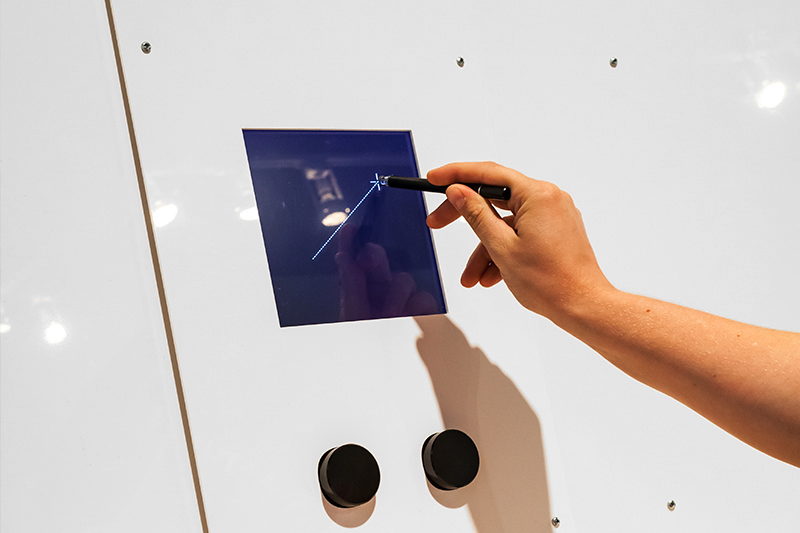
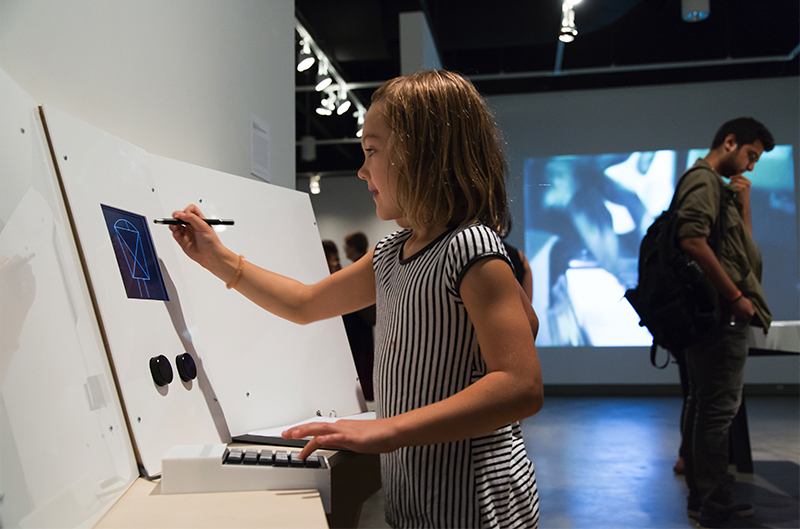
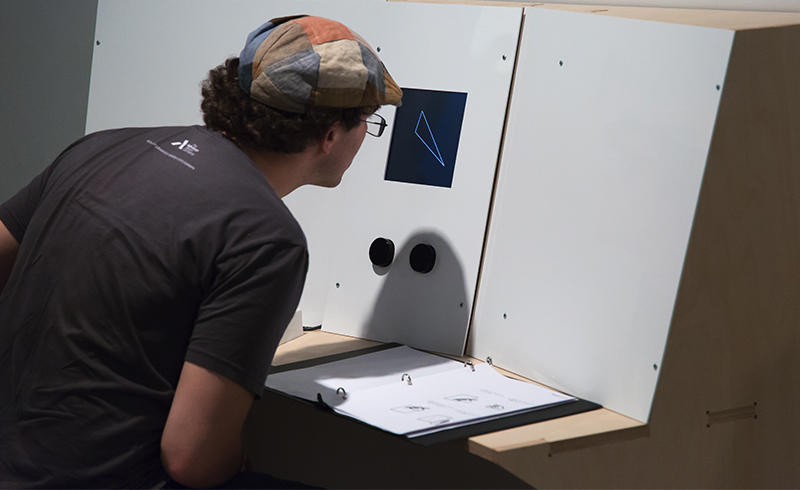
Reconstruction of Chris Yessios's 'CISP' (1972)
Parametric methods for architectural and urban design started to make their way into academic research in the early 1970s. Under the advise of Charles Eastman, Chris Yessios theorized a system for urban design called CISP as part of his PhD in Computational Design at Carnegie Mellon University. CISP allowed a user to define a vocabulary of elements and a series of constraints, such as views and accessibility, to configure different urban conditions. The system attempts to semi-autonomously create design solutions that respect the constraints. Given that CISP was never implemented, this reconstruction works entirely from research reports and papers found in the CMU archives.

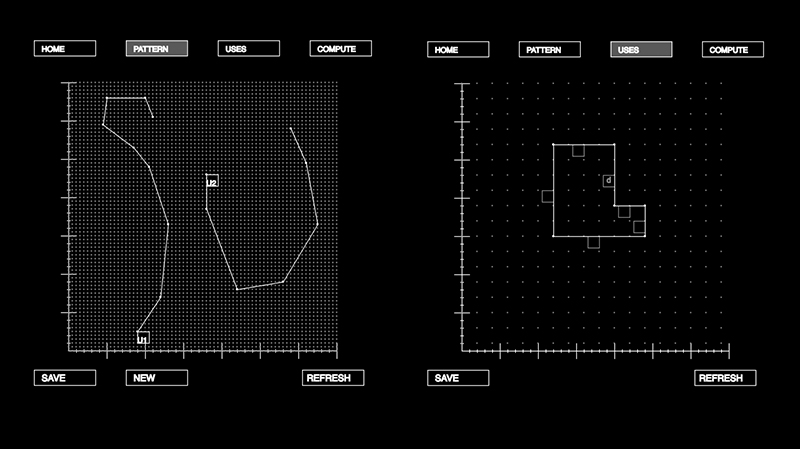
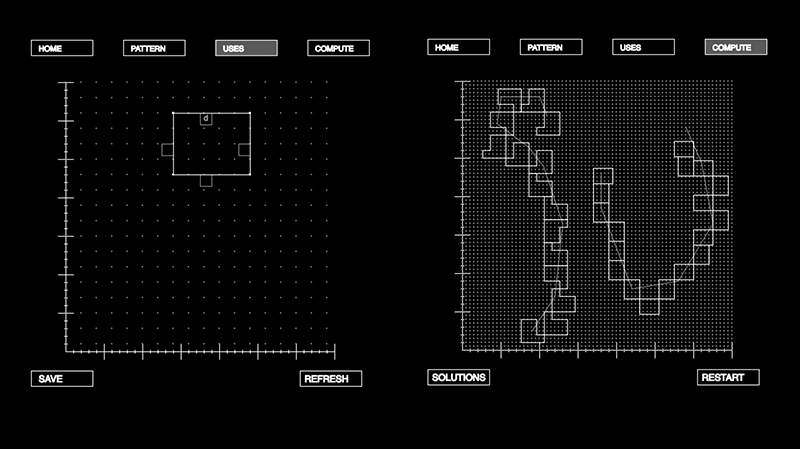
Figure. “CISP” is a pioneering example of Computer-Aided urban design, proposed at Carnegie Mellon in the 1970s by Christos Yessios. Photo on top from installation at “At the Heart of the Work: The Electronic Computer at Carnegie Mellon.” Curated by Mary Catharine Johannsen. May 1-30, 2019. Daniel Cardoso Llach and Harshavardan Kedia
Reconstruction of Nicholas Negroponte's 'URBAN 5' (1967)
URBAN5 is an experimental software for urban design developed by Nicholas Negroponte in 1967 at MIT. It was originally programmed in FORTRAN and ran on an IBM2250 computer. URBAN5 was meant to test the feasibility of language input in a process of urban design. It sought to enact a sort of intelligent design assistant able to converse with users and thus help "democratize" design and planning. However, by its author's own admission, URBAN5 was never functional and "inexhaustibly printed garbage." This software reconstruction approximates some of this system's functionality and intent, piecing together the system from descriptions by its author across several publications. The reconstruction offers access to the author's ambition to bring contemporary ideas about language processing and artificial intelligence into the realm of architecture and urban desing — and to the difficulties of its implementation.


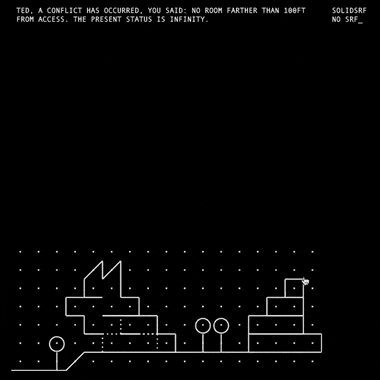
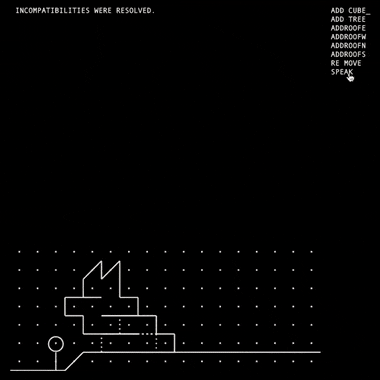

daniel cardoso llach 2017 - all rights reserved